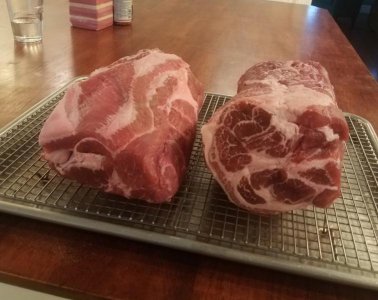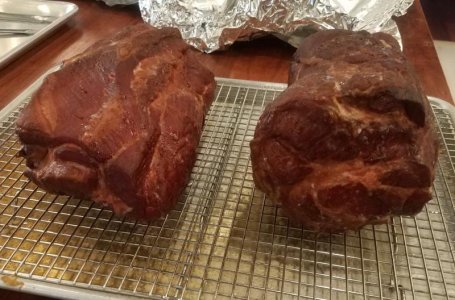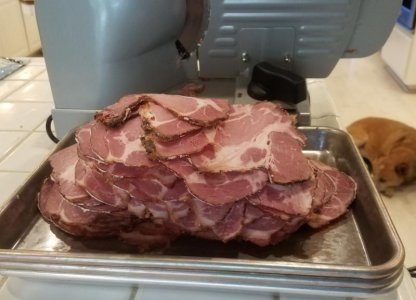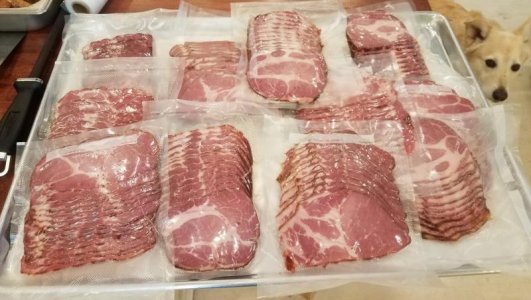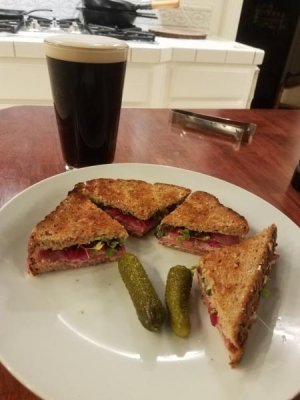stickman
Knows what a fatty is.
Started experimenting with buckboard ham (bacon?) recently, and this is, like, my 4th attempt. I think I am close to having it figured out.
I use Costco boneless pork butt and trim it to remove the region where the bone was. I then use a wet brine for nine days. I use salt at 4%, brown sugar at 4-6%, curing salt at 0.5%, all calculated by the combined weight of meat and water. I also add 4 bay leaves, 3 crushed garlic cloves, 1 tbsp of black peppercorns and about 1/2 tbsp of cloves per gallon of brine. This time I had two pieces of meat, each about 9 lbs, and one gallon of water. Prior to putting the meat in the brine bucket I use an injector to get brine into the center. If I don't do that, I end up with a little spot of uncured pork in the center of each slice.
After four days I turn the meat in the bucket, and after nine days I pull it, rinse it and let it sit in clean water for about 5 mins, then pat dry and set in the fridge overnight to form a pellicle. Then into the smoker. I'm still working out the right internal temp to pull the meat - so far I have tried a range of 155 - 165 degrees and they have all worked out OK. There seems to be a trade-off - if I go higher - say to 180 - I could get more connective tissue to melt but then it might be too dry. I'd be interested to know your thoughts on that ...
After smoke, wrap and let sit to cool, then in the fridge overnight to firm up for slicing. Finally, slice, vacuum pack and freeze. Pics below ...
I use Costco boneless pork butt and trim it to remove the region where the bone was. I then use a wet brine for nine days. I use salt at 4%, brown sugar at 4-6%, curing salt at 0.5%, all calculated by the combined weight of meat and water. I also add 4 bay leaves, 3 crushed garlic cloves, 1 tbsp of black peppercorns and about 1/2 tbsp of cloves per gallon of brine. This time I had two pieces of meat, each about 9 lbs, and one gallon of water. Prior to putting the meat in the brine bucket I use an injector to get brine into the center. If I don't do that, I end up with a little spot of uncured pork in the center of each slice.
After four days I turn the meat in the bucket, and after nine days I pull it, rinse it and let it sit in clean water for about 5 mins, then pat dry and set in the fridge overnight to form a pellicle. Then into the smoker. I'm still working out the right internal temp to pull the meat - so far I have tried a range of 155 - 165 degrees and they have all worked out OK. There seems to be a trade-off - if I go higher - say to 180 - I could get more connective tissue to melt but then it might be too dry. I'd be interested to know your thoughts on that ...
After smoke, wrap and let sit to cool, then in the fridge overnight to firm up for slicing. Finally, slice, vacuum pack and freeze. Pics below ...

